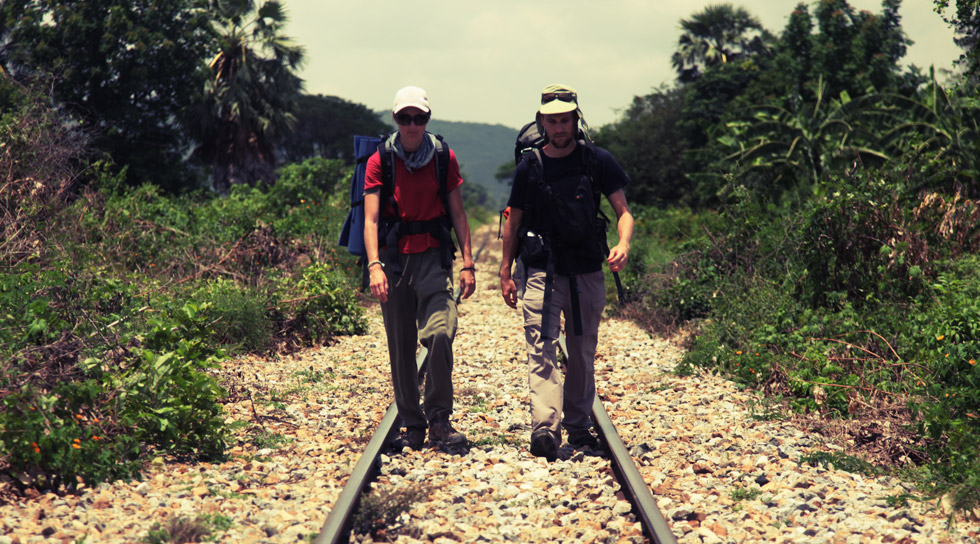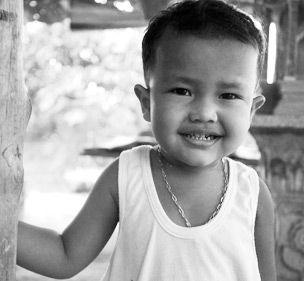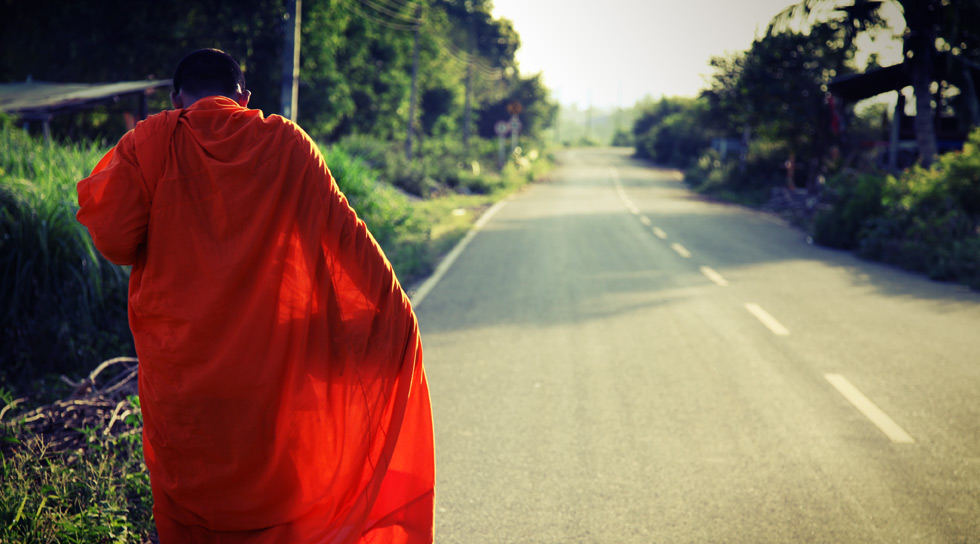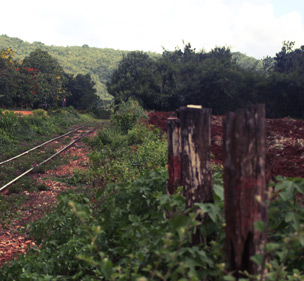
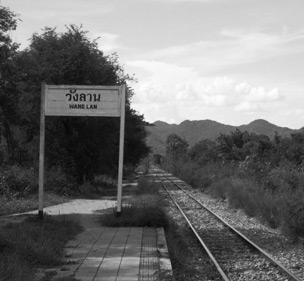
I step onto the first sleeper. It creaks under my weight. I carefully move forward being careful to take it slowly - one step at a time. I look down between the sleepers. Big mistake. A cry escapes me. I don't like this. I feel completely vulnerable. What if a train comes?

Rachel Beswetherick is a writer, adventurer and outdoor enthusiast. In April/May 2011, Rachel along with her brother Luke Nowell walked over 300km in memory of the F-Force prisoners of war from WWII. The Death Railway Expedition saw them trek along the still existing railway, through the Thai jungle and remote villages. Luke is making a documentary about the journey whilst Rachel is currently writing her first book.
You can find out more about the expedition on their website www.deathrailwaywalk.com. Rachel also runs her own website www.intrepid-girl.com where you can find out more about her other projects. Or follow her on twitter @intrepidgirl
“Ban Pong?” I try to say so they will understand.
“Oohh, Ban Pong,” the elderly lady nods.
“Uh, Ban Pong,” I gesture with my arms and walk on the spot, “de nee” (here). My Thai is limited but with each interaction I'm learning more and more.
“Oohh, de nee!” another nod of understanding. More walking on the spot, “Kanchanaburi!”
“Oohh...!!” nods all around.
Confident they have understood what I am doing, walking from Ban Pong to Kanchanaburi, I take the chance now to observe my surroundings. The house is a very simple, concrete style common in rural Thailand. A mango tree hovers above me, the branches hang low, heavy with sour mango. Off in the distance I notice a man working with his hands on what looks like from afar, a masterpiece. I stroll over to where he is. He is building Buddhist shrines. Now I notice them everywhere, he obviously has a thriving business! A good business it is to be in too. The correct names for these shrines are spirit houses – in Thai San Phra Poom – and they come in two styles; one leg and four leg. Each Buddhist household must have a spirit house, in fact, they need to have more than one. So if someone were to ask me, 'What business should I begin in Thailand?' (cause I get asked that question all the time, not really), my answer would inevitably be spirit houses! This mans spirit houses are eloquently made, colourfully painted in red, blue, yellow and greens.
“Kao?” one of the ladies asks. Knowing this to mean eat, in Thai, I nod. She indicates for me to enter the house. But I need to get going. The heat of the day is not far off. I want to make as much distance as I can before the heat debilitates me. Whatever the universal action for take away is, I do it. The lady nods, jumps on her motorbike and rides away! I have no idea where she has gone. I sit in silence waiting for the next surprise, and a surprise I sure get! The lady arrives back ten minutes later with food she has bought. I am taken back – how incredibly generous. She has no idea who I am. To add to the spontaneous kindness she also piles my arms with bananas and sour mango from their trees. Overwhelmed, arms heavy laden with an over abundance of food I bid the family farewell. Not far down the dirt road I ditch the mangoes, launching them onto a field. Unlike the sweet mango which is soft and makes taste buds sing, its relative the sour mango is the opposite – crunchy and tasteless except for a bitter twang. Also they are extremely heavy! I doubt the POW's discarded food when Thai's offered it to them. I feel bad; selfish and ungrateful. But I have to remind myself I'm not here to relive the POW's experience. It's about gaining an understanding. I remember reading about Thai locals giving POW's food when they passed through towns on their march; rice pudding wrapped in banana leaves, fruit and packets of salt. Maybe this spontaneous generosity is a part of the story – the POW's and mine.
I am approaching another bridge. Originally there was 680 trestle bridges along the 415km Thai-Burma railway. Not many of the originals remain today. The bridge before me is made of wood and stands 20 metres or so above the ground. It's also really long. I step onto the first sleeper. It creaks under my weight. I carefully move forward being careful to take it slowly - one step at a time. I look down between the sleepers. Big mistake. A cry escapes me. I don't like this. I feel completely vulnerable. What if a train comes? I'm about half way across when it starts pouring with rain. Desperate to reach the end but careful not to slip on the wet track I quickly move forward. I decide to stop for lunch under a tree away from the rain. In the paper packages, given by the Thai lady, is rice and chicken. It's delicious and the fresh coriander hits the spot. I'm so grateful for the tasty lunch. Slurping it down with pepsi and munching on a banana for dessert I smile - inside and out. I am loving this moment. It's incredible how food lifts morale. It's even more incredible how food given as a gift, from a family with little, restores one's faith in humanity.
Sign up to receive free updates from Sidetracked here.







